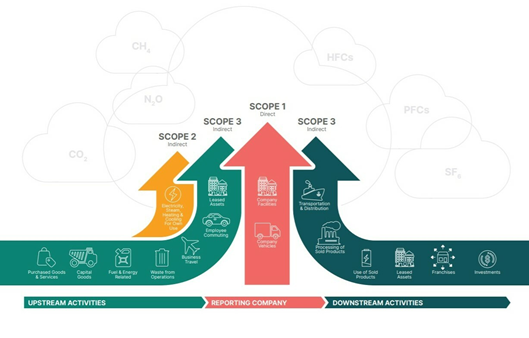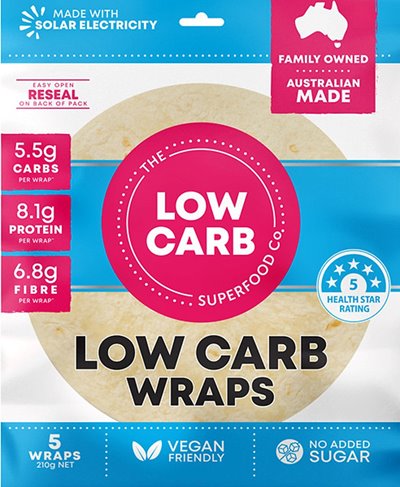In a utopian world, Food and Beverage manufacturers wouldn’t have to undergo the long, confusing, and costly transition to cleaner energy sources to power their supply chains. The ‘dirty’ grid would be funded by government, resulting in a much quicker switch to green. But like all great dreams, we are (against our own will) jolted back to reality.
With mounting pressures and the absence of a fast moving national climate and energy policy, the Food and Beverage (F&B) sector has taken leadership in going green sooner. The F&B industry has set ambitious but achievable 2050 net-zero emission targets, with some aiming for as early as 2030 (terrifyingly, less than 10 years away). Setting clear corporate goals is the first step. However, translating corporate aspirations into meaningful program or project goals can be a daunting task for many organisations.A combination of expertise needs to come together to provide practical solutions.
Turning dreams into reality, Beca Australia’s Harshal Patel – future energy guru and market leader in the power team; and Mark Robertson – a market segment leader in the Food and Life Sciences sector, join our F&B Sound Bites host, Hamish McCook. During this conversation they offer their advice on quick wins, alternative approaches, and next steps for F&B producers undertaking the vital transition to renewable energy.
“How does the Food and Beverage Industry start to journey towards net-zero? Simply, it starts with establishing a roadmap to understand where you can make carbon reductions in your business and formulate solutions around projects that will get your organisation to your net-zero target” - Harshal Patel
The unfolding energy transition
Where to begin? Working with our clients towards their own energy transition goals, we start by analysing their current energy sources and consumption habits, before developing a detailed roadmap – which considers their current assets and potential solutions.
This includes looking closely at Scope 1,2 and 3 emissions:
- Scope 1 – these are directly generated through your day-to-day operations
- Scope 2 – these emissions come from the electricity you purchase
- Scope 3 – these emissions come from within your supply chain

Once a clear picture of your energy consumption is established, we can look for viable solutions. For example, there is often “low hanging fruit” when it comes to Scope 2 emissions and by changing electricity providers to a retailer offering low carbon or renewable green energy, you can instantly reduce your carbon footprint. As the global transition towards renewable energy gathers pace and the grid starts to become greener, purchasing power from the grid will only become a more commercially attractive option.
Other solutions we’ve identified for clients when it comes to Scope 2 emissions are looking at their energy self-sufficiency. On-site generation is a viable option in many cases. Whether that be behind the meter embedded renewable generation from biogas, solar PV rooftop or on-the-ground panels, this option can work at least some of the time. How much storage then becomes the key question when the output is essential, whilst the input is variable.
“You can simply switch retail providers to those providing low carbon or renewable energy as a way to immediately green up your business” – Harshal Patel
The growing business case for renewable energy
Nowhere in the F&B Industry has the need to respond to growing environmental concerns been more prominent than in the FMCG (Fast Moving Consumer Goods) sector. Given the FMCG sector has traditionally been very responsive to shifting consumer preferences, it’s also leading the way when it comes to the green revolution.
For example, not so long-ago consumers shifted in droves from high sugar carbonated drinks – to healthier spring water in plastic bottles. Fast forward a couple of years and single-use plastic bottles are now undesirable for many consumers. Beverage producers have therefore had to adjust again by investing themselves in closing the loop through funding a Container Deposit Scheme and building PET recycling facilities.
Similarly, in a short amount of time, the business case for shifting to cleaner sources of energy has become much stronger, driven largely by consumer preferences. From an investment decision perspective, it’s no longer simply a matter of reducing your utility bills, but about maintaining or growing your customer base.
“Sustainability has become a key factor (in Food and Beverage producer’s strategies), which in turn will drive consumers to their products” – Mark Robertson

Low carb wraps (pictured above) made by The Low Carb Superfood Co sold at ALDI Australia. The organisation source their ingredients locally to reduce their greenhouse gas emissions, and they offset some of their electricity from a solar farm located on their production site in Maryborough Victoria and wind turbines.
The future for Food & Beverage clients: Planning what’s next
So, what are the next steps for your business you may be asking?
Moving from traditional ‘dirty’ power sources to renewable energy is a complex undertaking and one that involves a whole suite of technical solutions. That’s where our Beca engineering expertise comes to the fore!
The first and most important step is laying the groundwork by identifying clear, science-based corporate sustainability goals that align effectively with your broader business strategy. Many of our Food and Beverage clients already have clear corporate sustainability goals in place, including emissions reduction targets they’re looking to achieve over 8-10 years.
With an overarching sustainability strategy in place, you can now begin translating your corporate goals into specific project development goals. This drives the Design brief for how the assets are to perform, and the way you may procure them from the market.
For items such as refrigeration, heat generation and the choice of building materials there are a broad range of options in both greenfield or brownfield development scenarios. Incorporating sustainability thinking over the total life of the asset, brings about new thinking in how options are ranked. Much like the utility bill example, it is no longer just about capital cost but rather the carbon cost that can also be quantified. Addressing opportunities doesn’t always require big bang investments but can be planned over a series of stages that fit within fiscal or operational constraints.
Ample funding opportunities now exist to help finance industrial producers to investigate and implement decarbonisation of their operations faster across Australia and New Zealand.
Final thoughts
With the economic, social and political need to transition towards cleaner energy sources becoming increasingly clear, it’s easy to feel daunted by the challenge that lies ahead.
However, an energy transition doesn’t have to be difficult and aligning your transition to overarching corporate objectives is your first step towards net-zero. Pricing carbon into your business case development processes is also another way you can begin changing the mindset of your organisation.
“Energy transition doesn’t have to be hard. It can be quite a daunting process when you don’t know where to start, but aligning energy transition with your corporate sustainability objectives is the first step towards implementing a future roadmap that will get your organisation through to net zero” – Harshal Patel
Whilst a true utopia would be a world where the grid is 100% green, we can’t wait for that to happen as the Food and Beverage sector is the largest manufacturing industry in Australia. Collectively we have the power to transform the energy efficiency of our Food and Beverage businesses so they’re match fit for a low carbon future!
These insights are taken from Episode 20 of Beca’s F&B Sounds Bites podcast series. F&B Sound Bites covers hot topics, trends and challenges for professionals in the engine room behind the Food and Beverage industry, hosted by Hamish McCook.
 New Zealand
New Zealand
 Australia
Australia
 Singapore
Singapore